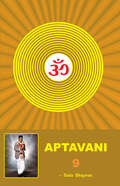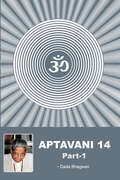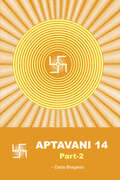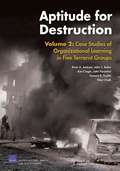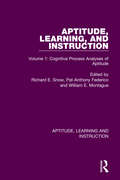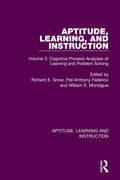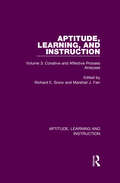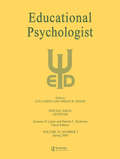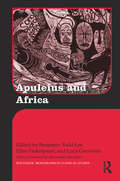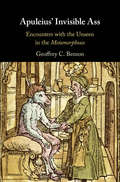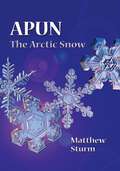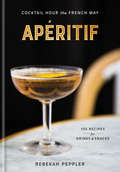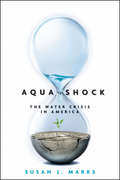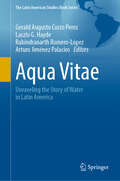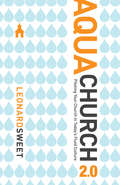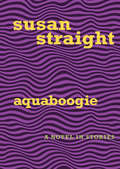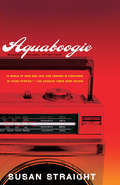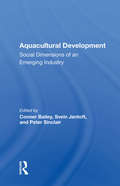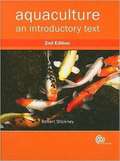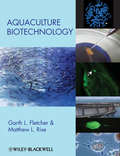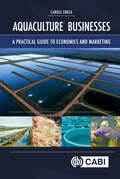- Table View
- List View
Aptavani - 9
by Dada Bhagwan“Aptavani 9” is the ninth in a series of spiritual books titled “Aptavani”. In this series, Gnani Purush (embodiment of Self knowledge) Dada Bhagwan addresses age-old unanswered questions of spiritual seekers. Dadashri offers in-depth answers to questions such as: “What is the definition of ignorance, the definition of self awareness, and the definition of freedom – and are they all related?”, “What are the signs of spiritual awakening?”, “If I gain spiritual power from spiritual practices, is that dangerous to my spirituality in any way?, “What is liberation, or moksha?” For those desirous of attaining moksha, Dadashri explains that certain pitfalls must be avoided in the process of spiritual development. He describes how, in spirituality and practice, one must be careful not to fall into a lack of awareness. From understanding “Who am I?” and attaining knowledge of Self, true spirituality unfolds within, which supports a spiritual life leading to ultimate liberation.
Aptavani-14 Part-1
by Dada BhagwanThe book presented here reveals the properties of the Self and identifies the problems because of which we are unable to realize the Self. The book is divided into two subparts: Part 1 This part discusses which are the six eternal elements of the universe, the cause of rise of visheshbhav (“I”) and egoism. The soul remains in its original form but a separate identity (“I”) gets evolved due to pressure of scientific circumstantial evidences and self ignorance. “I“ is the first level of separate identity and “ego” is the second level. Wrong beliefs such as “I am Chandu (reader should use his own name)”, “I am the doer” arise and consequently anger, pride, lust and greed develops out of such wrong beliefs. ”I am Chandu” this belief is the cause of all sorrow .Once this belief goes away there is no sorrow.
Aptavani-14 Part-2
by Dada BhagwanThis Aptavani describes the properties and nature of the Soul as experienced by Param Pujya Dadashri. How He was able to use that quality Himself theoretically as well as practically, He experienced it and gave us a wonderful insight into using it and entering the Soul. And in the chapter of Siddha Stuti, we get things like how to use that virtue to keep equanimity in worldly situations and what is the reality against the worldly beliefs? Also, how can these qualities be used in different states of beliefs? How does an enlightened person experience such qualities realistically? And beyond that, how would the Tirthankaras be experiencing in the highest state? All these things said by Param Pujya Dadashri are included here.
Aptitude for Destruction, Volume 2
by Peter Chalk Kim Cragin Brian A. Jackson John C. Baker John V. ParachiniBetter ways are needed to understand how terrorist groups increase their effectiveness and become more dangerous. Learning is the link between what a group wants to do and its ability to actually do it; therefore, a better understanding of group learning might contribute to the design of better measures for combating terrorism. This study analyzes current understanding of group learning and the factors that influence it. It presents detailed case studies of learning in five terrorist organizations and develops a methodology for ascertaining what and why groups have learned, providing insights into their learning processes.
Aptitude, Learning, and Instruction: Volume 1: Cognitive Process Analyses of Aptitude (Aptitude, Learning and Instruction)
by Richard E. Snow, Pat-Anthony Federico and William E. MontagueFor the previous 6 years before publication, Office of Naval Research (ONR) had been conducting a thematically oriented contract research program aimed, in large part, at developing the kind of broad theoretical framework necessary for a workable process interpretation of aptitude, learning, and performance. Originally published in 1980, the papers in this collection are generally addressed to three broad areas that were central to those interests of the ONR Personnel and Training Research Programs. One area is concerned with individual differences information processing, as revealed in simple laboratory or psychometric tests. The second area focuses on the structural aspects of learning and performance, using tools and concepts from semantic memory theory to describe what is learned and how it is learned. And the third area is aimed at the management of instruction: It addresses itself to the kinds of research and instructional designs required for effective implementation of adaptive instruction.
Aptitude, Learning, and Instruction: Volume 2: Cognitive Process Analyses of Learning and Problem Solving (Aptitude, Learning and Instruction)
by Richard E. Snow, Pat-Anthony Federico and William E. MontagueFor the previous 6 years before publication, Office of Naval Research (ONR) had been conducting a thematically oriented contract research program aimed, in large part, at developing the kind of broad theoretical framework necessary for a workable process interpretation of aptitude, learning, and performance. Originally published in 1980, the papers in this collection are generally addressed to three broad areas that were central to those interests of the ONR Personnel and Training Research Programs. One area is concerned with individual differences information processing, as revealed in simple laboratory or psychometric tests. The second area focuses on the structural aspects of learning and performance, using tools and concepts from semantic memory theory to describe what is learned and how it is learned. And the third area is aimed at the management of instruction: It addresses itself to the kinds of research and instructional designs required for effective implementation of adaptive instruction.
Aptitude, Learning, and Instruction: Volume 3: Conative and Affective Process Analyses (Aptitude, Learning and Instruction)
by Richard E. Snow and Marshall J. FarrOriginally published in 1987, this book reports the proceedings of a conference held in 1983 at Stanford, California. The purpose of the conference was to bring together individuals whose research reflected advanced theoretical thinking and empirical evidence on the combined analysis of cognitive, conative, and affective processes, the role of these processes in learning from instruction, and the importance of individual differences therein. The Editors believed that this volume made an early and important contribution to the reemphasis and reexamination of the conative and affective aspects of human performance, in coordination with cognitive psychology, in the study of aptitude, learning, and instruction. It takes its place as Volume 3 of the Aptitude, Learning, and Instruction series.
Aptitude: A Special Issue of Educational Psychologist (Educational Psychology Ser.)
by Lyn Corno Patrick C. Kyllonen Philip H. Winne Susanne P. LajoieRichard Snow's research influenced many students and colleagues, both directly through his findings and indirectly by inspiring others to carry on the work. A cross-section of his influence is represented in this special issue. The articles present several themes in his work, including the importance of multivariate considerations of individual differences, adapting instruction to individual learners, a process understanding of aptitude, and an enlarged role for spatial ability. Each paper picks up one of the themes identified--trait complexes, ATIs, process analyses, and spatial ability--and has a strong quantitative, empirical foundation but is nested within appropriately complex theoretical frameworks.
Aptiv PLC Board of Directors
by Lynn Sharp PaineAptiv’s board must decide whether a joint venture with an auto maker is the right next step in the company’s efforts to develop and commercialize a production-ready autonomous driving system. While many commentators believed that Aptiv’s self-driving technologies had the potential to revolutionize vehicle use and generate enormous financial returns, the company was in a high-profile and increasingly capital intensive race among some of the world’s technology giants to achieve that goal—and much more investment would be needed. As the management team began exploring the possibility of working with a partner to share the costs and accelerate their research and development activities, they turned to the board for strategic guidance. The case describes the role of the board and its Innovation and Technology Committee (ITC) in the company’s transformation from a traditional auto parts supplier to a high-technology firm focused on the future of mobility and lays out the factors directors are weighing as they consider the possibility of forming a major joint venture with a vehicle manufacturer.
Aptiv PLC Board of Directors (A)
by Lynn Sharp Paine Will HurwitzAptiv's board must decide whether a joint venture with an auto maker is the right next step in the company's efforts to develop and commercialize a production-ready autonomous driving system. While many commentators believed that Aptiv's self-driving technologies had the potential to revolutionize vehicle use and generate enormous financial returns, the company was in a high-profile and increasingly capital intensive race among some of the world's technology giants to achieve that goal - and much more investment would be needed. As the management team began exploring the possibility of working with a partner to share the costs and accelerate their research and development activities, they turned to the board for strategic guidance. The case describes the role of the board and its Innovation and Technology Committee (ITC) in the company's transformation from a traditional auto parts supplier to a high-technology firm focused on the future of mobility and lays out the factors directors are weighing as they consider the possibility of forming a major joint venture with a vehicle manufacturer.
Aptiv PLC Board of Directors (B)
by Lynn Sharp Paine Will HurwitzAptiv's board must decide whether a joint venture with an auto maker is the right next step in the company's efforts to develop and commercialize a production-ready autonomous driving system. While many commentators believed that Aptiv's self-driving technologies had the potential to revolutionize vehicle use and generate enormous financial returns, the company was in a high-profile and increasingly capital intensive race among some of the world's technology giants to achieve that goal - and much more investment would be needed. As the management team began exploring the possibility of working with a partner to share the costs and accelerate their research and development activities, they turned to the board for strategic guidance. The case describes the role of the board and its Innovation and Technology Committee (ITC) in the company's transformation from a traditional auto parts supplier to a high-technology firm focused on the future of mobility and lays out the factors directors are weighing as they consider the possibility of forming a major joint venture with a vehicle manufacturer.
Apuleius and Africa (Routledge Monographs in Classical Studies)
by Benjamin Todd Lee Ellen Finkelpearl Luca GraveriniThe Metamorphoses or Golden Ass of Apuleius (ca. 170 CE) is a Latin novel written by a native of Madauros in Roman North Africa, roughly equal to modern Tunisia together with parts of Libya and Algeria. Apuleius’ novel is based on the model of a lost Greek novel; it narrates the adventures of a Greek character with a Roman name who spends the bulk of the novel transformed into an animal, traveling from Greece to Rome only to end his adventures in the capital city of the empire as a priest of the Egyptian goddess Isis. Apuleius’ Florida and Apology deal more explicitly with the African provenance and character of their author while also demonstrating his complex interaction with Greek, Roman, and local cultures. Apuleius’ philosophical works raise other questions about Greek vs. African and Roman cultural identity. Apuleius in Africa addresses the problem of this intricate complex of different identities and its connection to Apuleius’ literary production. It especially emphasizes Apuleius’ African heritage, a heritage that has for the most part been either downplayed or even deplored by previous scholarship. The contributors include philologists, historians, and experts in material culture; among them are some of the most respected scholars in their fields. The chapters give due attention to all elements of Apuleius’ oeuvre, and break new ground both on the interpretation of Apuleius’ literary production and on the culture of the Roman Empire in the second century. The volume also includes a modern, sub-Saharan contribution in which "Africa" mainly means Mediterranean Africa.
Apuleius' Invisible Ass: Encounters with the Unseen in the Metamorphoses
by Geoffrey C. BensonApuleius' Metamorphoses (or The Golden Ass), a masterpiece of Latin literature from the second century AD, still captivates modern readers with its combination of asininity and mysticism. In the novel, a young man named Lucius tells how he accidentally turns into a donkey and then describes how he regains human form with the help of the Egyptian goddess Isis, into whose cult he is initiated. This book argues that invisibility is one of the central motifs in the Metamorphoses and, in the process, presents a new interpretation of Apuleius' novel as a visionary, esoteric text. It contributes both to the study of the subtle relationship between literature and Platonic philosophy and to the cultural history of invisibility in classical antiquity and beyond.
Apuleius' Platonism
by Richard FletcherApuleius of Madauros, writing in the latter half of the second century CE in Roman North Africa, is best known to us today for his Latin fiction, the Metamorphoses aka The Golden Ass, about a man who turned into a donkey and back again. However, he was also a Platonic philosopher, who, even though many of his writings are lost, wrote a range of rhetorical and philosophical works which survive to this day. This book examines these works to reveal how Apuleius' Platonism is a result of his 'impersonation of philosophy', that is, a rhetorically powerful methodological tool that allows him to 'speak' on behalf of Plato and his philosophy. This book is the first exploration of the full scope of his idiosyncratic brand of Platonism across his multifarious literary corpus and is a major contribution to the study of the dynamic between literature and philosophy in antiquity and beyond.
Apun: The Arctic Snow
by Matthew SturmThere are some twenty-five words for “snow” in the Inupiaq language. Each word denotes a different kind of snow—fresh powder snow, hard pack, soft snow, very wet snow, or just snow. Such fine distinction is reasonable, for over the centuries, Natives of the Arctic have had to rely on their knowledge of the snow to survive. Now Matthew Sturm has prepared an educational children’s book designed to teach a new generation of Arctic residents the importance of Arctic snow cover. Fully illustrated to demonstrate the cycle of the snow cover, Apun covers each phase of the “snow year.” Geared towards grades 3–4, this is a must read for elementary science classes.
Apéritif: Cocktail Hour the French Way
by Rebekah PepplerGrab a light drink and a bite, and enjoy cocktail hour, the French way For the French, the fleeting interlude between a long workday and the evening meal to come is not meant to be hectic or crazed. Instead, that time is a much needed chance to pause, take a breath, and reset with light drinks and snacks. Whether it's a quick affair before dashing out the door to your favorite Parisian bistro or a lead-up to a more lavish party, Apéritif is about kicking off the night, rousing the appetite, and doing so with the carefree spirit of connection and conviviality. Apéritif celebrates that easygoing lifestyle with simple yet stylish recipes for both classic and modern French apéritif-style cocktails, along with French-inspired bites and hors d'oeuvres. Keeping true to the apéritif tradition, you'll find cocktail recipes that use lighter, low-alcohol spirits, fortified wines, and bitter liqueurs. The impressive drinks have influences from both Old World and New, but are always low fuss and served barely embellished--an easy feat to pull off for the relaxed host at home. Apéritif also offers recipes for equally breezy bites, such as Radishes with Poppy Butter, Gougères, Ratatouille Dip, and Buckwheat-Sel Gris Crackers. For evenings that are all about ease and approachability without sacrificing style or flavor, Apéritif makes drinking and entertaining at home as effortless, fun, and effervescent as the offerings themselves.
Aqua Shock, Revised and Updated: Water in Crisis (Bloomberg #155)
by Susan J. MarksAn objective look at America's rapidly shrinking water supply Once believed to be a problem limited to America's southwest, water shortages are now an issue coast to coast, from New England to California. In Aqua Shock: The Water Crisis in America, author Susan J. Marks provides a comprehensive analysis of the current conflicts being waged over dwindling water supplies. She presents the findings of university studies, think tanks, and research groups, as well as the opinions of water experts, including Peter Gleick, president of the Pacific Institute for Studies in Development, Environment, and Security. The book Explains where our water comes from and who controls it, as well as the cost of water on cash, commodities, and capitalism Describes the risks of running out of water Details how we can preserve and protect our most precious, yet most undervalued natural resource Right now, battles over water supplies rage across the country. Aqua Shock is an objective look at how we arrived at this crisis point and what we can do-and should be doing-to solve the water crisis in America.
Aqua Vitae: Unraveling the Story of Water in Latin America (The Latin American Studies Book Series)
by Gerald Augusto Corzo Perez Laszlo G. Hayde Rabindranarth Romero-López Arturo Jiménez PalaciosThis comprehensive book presents an analytical journey through the relationship between water and Latin American societies, offering an engineering perspective on historical water resource utilization. The book unravels the integral role water has played in the cultural, technological, and socio-economic development of the region, providing a foundational reference for engineers, academics, and researchers. The book's exploration into water's perception and usage throughout history provides key insights into how human activity has impacted water resources and vice versa. It presents a meticulous examination of water as both a natural and cultural phenomenon, identifying its essential role in sustaining life and ecosystems, as well as its potential for causing devastation through disease and natural disasters. We delve into the complexities of water's role in society, illustrating how it is woven into the fabric of everyday life, religious ceremonies, and global events. The book also underscores the varying significance and implications of water across different regions within Latin America. The narrative unfolds across three major sections: Technology, Water Management, and Socio-Cultural-Economical Impact. The 'Technology' section examines the evolution of water-related technologies and their significant socio-economic implications. The 'Water Management' part offers a holistic perspective on water resource management practices, both historical and contemporary. The final section delves into the societal implications of water use, including conflicts arising from political and economic decisions related to this crucial resource. Designed for engineers, environmental scientists, and policy-makers, this book provides a unique blend of historical context, technical knowledge, and socio-cultural insights. It offers an invaluable resource for those seeking to understand the interplay between engineering practices, water resources, and societal developments in Latin America. It serves as a springboard for further research and informed decision-making in water resource management and policy, fostering a greater understanding of the myriad ways in which water influences and is influenced by human activity.
AquaChurch 2.0
by Leonard SweetWe live in a fast-paced, fluid world. A postmodern place where people are drifting, making mid-course corrections in every aspect of life, from careers, to relationships, to beliefs. As church leaders, we must continually reshape our ministries to reach a society adrift. We must move from being adaptive to being proactive, remaining flexible while delivering a uncompromising message. AquaChurch 2.0 is a guide for developing responsive and relevant church leadership. Fusing Biblical wisdom and modern-day insights, acclaimed author Leonard Sweet explores the essentials of leadership arts, including vision, creativity, and teamwork. This updated and revised edition will enable your ministry to navigate today's cultural currents, provide a beacon to your community, and connect with a postmodern world.
Aquaboogie
by Susan StraightSusan Straight's exquisite debut: A collection of short fiction about a hardscrabble town whose inhabitants try to reconcile their old ways with some disconcerting new ones These fourteen interconnected stories take place in Rio Seco, a fictional city in California based on the author's hometown of Riverside. With its fire-prone mountains, palm trees, and pig farms, the languid pace of life in Rio Seco has the distinct air of the South, and indeed many of the town's older residents hail from Mississippi. But despite a vibrant sense of community, both old and young are hemmed in by poverty and strife. Young people struggle to survive shootings, siblings are lost to cigarettes laced with embalming fluid, and older relatives are pushed out of their homes to make way for development. With exemplary compassion, Straight brings these characters' stories to searing life.
Aquaboogie: A Novel In Stories
by Susan Straight“Aquaboogie is a love story in fragments . . . A book by a writer whose love for her characters infuses her work with the dignity and urgency they so clearly deserve.” —The New York Times Book ReviewFull of defiance and tenderness, Aquaboogie chronicles the triumphs and tragedies of the residents of Rio Seco. In “Aquaboogie,” art student Nacho finances his class out East by working as a janitor, subject to torment by his white coworkers. In “Back,” elderly Pashion sleeps wrapped around the body of her dying husband L. C., all the while recalling their 49 years of marriage and thinking about the sleeping pills she has secreted away for when life becomes unbearable. In “The Box,” Shawan carries her radio everywhere; since her best friend was gunned down, music is the only thing that can get her through the day. In these and other stories in this powerful collection, the author gives voice to those on the margins while demonstrating her great affection for her characters.
Aquacultural Development: Social Dimensions Of An Emerging Industry
by Svein Jentoft Peter Sinclair Conner BaileyIn this volume, an international group of contributors explores the newly emerging aquaculture industry. Focusing on the social and environmental dimensions of aquacultural development in both industrialized and nonindustrialized nations, they examine issues of social equity, user-group conflict, environmental impacts of production, and the mediating role of the state. They also discuss aquaculture's role in development activity-especially in sustainable development, where it can enhance community viability, coherence, and solidarity. Asserting the need for careful planning and recognizing impending political and moral choices, the contributors assess the decisionmaking process for public authorities and development agencies and consider the social consequences of these decisions. Policymakers responsible for promoting and managing this growing industry will find this volume invaluable as they begin to research and design appropriate institutional structures. In addition, scholars interested in the overall adoption and diffusion of new technologies will find here a rich source of information about a system that shares attributes with but also differs significantly from agricultural and fisheries production systems.
Aquaculture
by Robert R StickneyProviding a broad and readable overview of the subject, this updated second edition of Aquaculture: An Introductory Text covers issues associated with sustainable aquaculture development, culture systems, hatchery methods, nutrition and feeding of aquaculture species, reproductive strategies, harvesting, and many other topics. While its main focus is on the culture of fish, molluscs, and crustaceans for food, the book also covers other forms of aquaculture, such as the production of seaweeds, recreational fish and ornamental species, and live foods such as algae and rotifers that are used to feed larval shrimp and marine fish. Printed in a new, larger format and illustrated with many photos and diagrams, this will be an essential resource for undergraduate students of aquaculture and related topics. The scope is global and much of the information is based on first-hand experiences of the author.
Aquaculture Biotechnology
by Matthew L. Rise Garth L. FletcherThis important book looks at a broad spectrum of biotech research efforts and their applications to the aquaculture industry. Aquaculture Biotechnology provides key reviews that look at the application of genetic, cellular, and molecular technologies to enable fish farmers to produce a more abundant, resilient, and healthier supply of seafood. Aquaculture Biotechnology is divided into seven sections and nineteen chapters that cover topics ranging from broodstock improvement to fish health and gene transfer. With chapters provided by leading researchers and skillfully edited by top scientists in the field, this will be a valuable tool to researchers, producers, and students interested in better understanding this dynamic field of aquaculture.
Aquaculture Businesses: A Practical Guide to Economics and Marketing
by Carole EngleThis exciting new book provides practical guidance and advice for individuals seeking to manage and develop a successful aquaculture business. Starting with an overview of the challenges faced by aquaculture business operatives, the book then contrasts the different issues faced by new start-up businesses and those that have been in business for many years. The book includes step-by-step guidance and advice on: - how to find key markets, locate customers and determine their preferences; - how to develop estimates of capital requirements for land, construction of buildings and production facilities; - how to purchase equipment; - how to develop a financing plan, including the key financial statements that show early indication of potential problems; - the types of permits and regulations that may be necessary; - delays and costs that can occur from ensuring compliance; - keeping an eye on emerging trends and current consumer preferences; and - monitoring external threats and opportunities. Written by Carole Engle, Aquaculture Businesses is an essential resource for aquaculture entrepreneurs and management-level decision makers for new start-up businesses globally. It is also applicable for existing businesses that need to grow and change with market dynamics. All aquaculture farm owners, and suppliers to the industry, should have this excellent resource to hand. Libraries in all universities and research establishments where aquaculture, business studies, economics or marketing are studied and taught should have copies of this book on their shelves.
